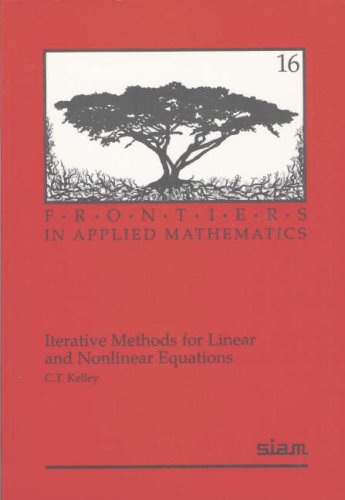
Iterative Methods for Linear and Nonlinear Equations
by C.T. Kelley
Publisher: SIAM 1995
ISBN/ASIN: 0898713528
ISBN-13: 9780898713527
Number of pages: 172
Description:
This book focuses on a small number of methods and treats them in depth. The author provides a complete analysis of the conjugate gradient and generalized minimum residual iterations as well as recent advances including Newton-Krylov methods, incorporation of inexactness and noise into the analysis, new proofs and implementations of Broyden's method, and globalization of inexact Newton methods.
Download or read it online for free here:
Download link
(780KB, PDF)
Similar books
 Robust Geometric Computation
Robust Geometric Computationby Kurt Mehlhorn, Chee Yap - New York University
Contents: Introduction to Geometric Nonrobustness; Modes of Numerical Computation; Geometric Computation; Arithmetic Approaches; Geometric Approaches; Exact Geometric Computation; Perturbation; Filters; Algebraic Background; Zero Bounds; etc.
(11066 views)
 Mathematical Computation
Mathematical Computationby Ian Craw - University of Aberdeen
The overall aim of the course is to present modern computer programming techniques in the context of mathematical computation and numerical analysis and to foster the independence needed to use these techniques as appropriate in subsequent work.
(14718 views)
 Lectures on The Finite Element Method
Lectures on The Finite Element Methodby Ph. Ciarlet - Tata Institute of Fundamental Research
Our basic aim has been to present some of the mathematical aspects of the finite element method, as well as some applications of the finite element method for solving problems in Elasticity. This is why some important topics are not covered here.
(10613 views)
 Lectures on Numerical Analysis
Lectures on Numerical Analysisby Dennis Deturck, Herbert S. Wilf - University of Pennsylvania
Contents: Differential and Difference Equations (Linear equations with constant coefficients, Difference equations, Stability theory); The Numerical Solution of Differential Equations (Euler's method); Numerical linear algebra.
(12144 views)